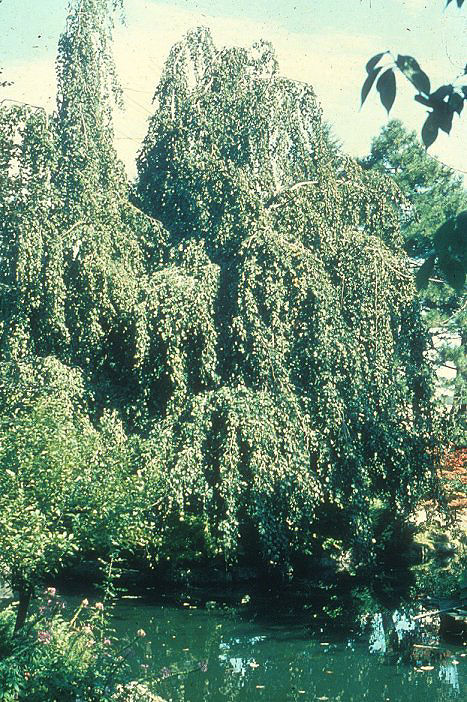| Botanical Name: Fagus sylvatica 'Pendula' | |
| Common Name: Weeping European Beech |

-
Anatomy
-
Culture
-
Design
Plant Type
Tree
Height Range
25-40'
Flower Color
Yellow
Flower Season
Spring
Leaf Color
Dark Green
Bark Color
Grey
Fruit Color
Brown
Fruit Season
Fall
Sun
Full, Half
Water
Medium, High
Growth Rate
Moderate
Soil Type
Clay, Loam, Rocky, Unparticular
Soil Condition
Average, Rich, Well-drained, Moist
Soil pH
Acid, Neutral, Basic
Adverse Factors
n/a
Design Styles
English Cottage, Formal, Japanese, Spanish
Accenting Features
Silhouette, Specimen, Unusual Shape
Seasonal Interest
Winter, Spring, Summer, Fall
Location Uses
Background, Shrub Border, Lawn, Patio, Park, Walls / Fences
Special Uses
Cascade, Screen
Attracts Wildlife
Birds
Information by: Stephanie Duer
Photographer: JJ Neilson Arboretum
Photographer: JJ Neilson Arboretum
-
Description
-
Notes
This beech grows about 20 to 30 feet tall and 20 feet or more wide. It has a weeping, irregular form, but it still gets tall as it maintains a central leader. Leaves are dark green with wavy margins; leaves turn golden yellow in the fall. Insignificant yellow spring flowers are followed by little nuts much enjoyed by birds.
Beeches are lovely trees, but are a little resentful of our hot, dry summers. Plant in loamy, well draining soil and mulch amply to keep roots cool. Does not do well in wet or heavily compacted soils. Selectively prune to control width, and remove branches that grow straight up; otherwise, do not shear for it will cause the growth to become overly dense and twiggy. Interesting accent or specimen pant. See Guide for planting tips.